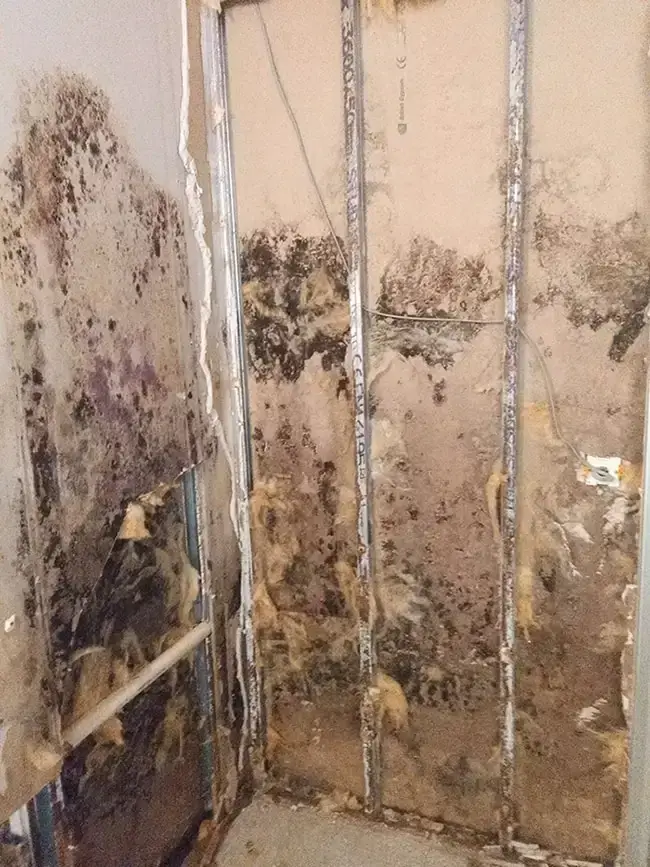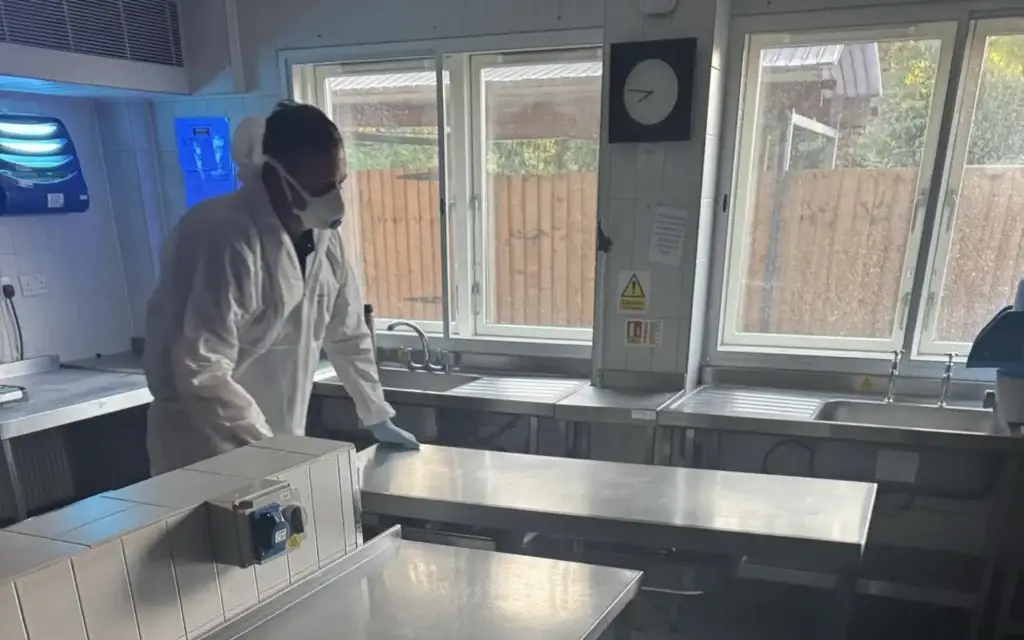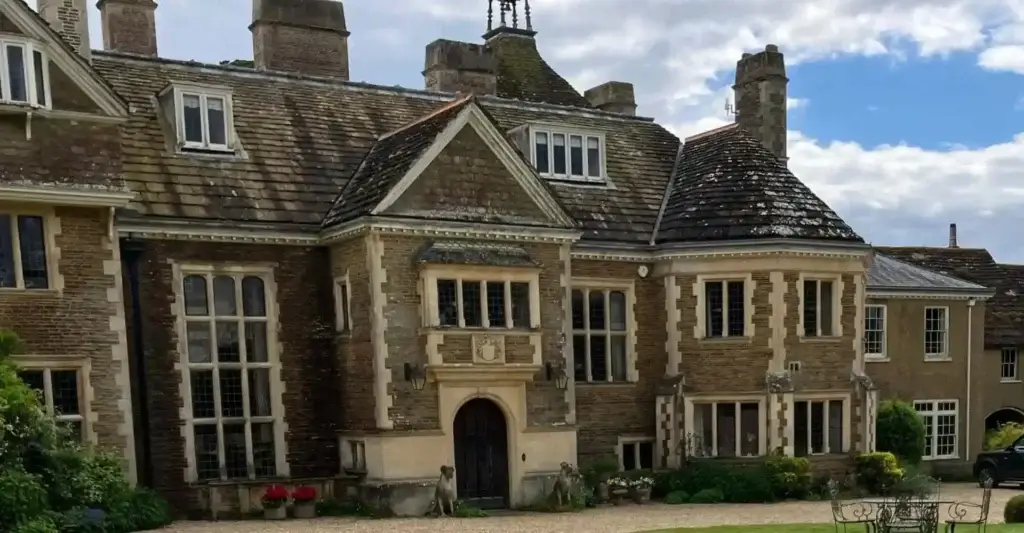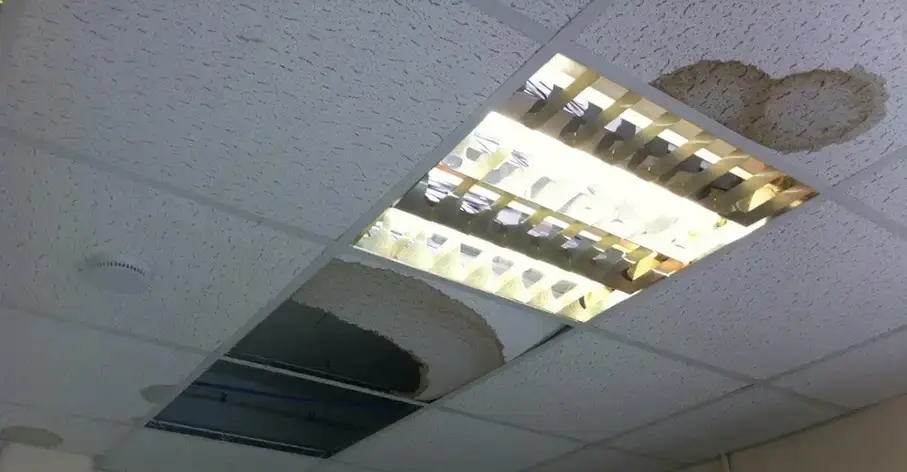The Problem: Restaurant sewage spill, London
A sewage backup caused widespread blackwater contamination in the basement of a busy London restaurant. Blackwater, which contains human waste and other hazardous materials, posed severe health risks to staff and customers. The contamination spread beyond the basement, impacting the ground floor with cross-contamination concerns.
Key challenges:
- Extensive damage: Blackwater penetrated the basement floor, wall cavities, and flooring. Contaminants became trapped, requiring intensive remediation.
- Severe moisture levels: Moisture readings peaked at 100% Wood Moisture Equivalent (WME), heightening the risk of microbial growth and material deterioration.
- Health risks: The contaminated environment increased the likelihood of bacterial and mould outbreaks.
- Operational downtime: The restaurant needed a swift solution to minimise closure time and financial losses.
Industry insight:
According to UK environmental agencies, over 70% of sewage-related incidents in commercial properties result in significant downtime, impacting revenue and customer trust. Proper remediation is crucial to restore safety and operational capacity.
The Solution: Muli-phase sewage cleaning & decontamination
We developed a multi-phase sewage cleaning plan to address the immediate hazards, decontaminate the affected areas, and prevent future issues.
Step 1: Emergency sewage extraction and containment
- Standing sewage was extracted from the basement floor to eliminate immediate health risks.
- A temporary timber wall was installed between the ground floor and basement to prevent cross-contamination, allowing the restaurant to operate partially while work continued.
Step 2: Cleaning and sanitisation
- Surface cleaning: All surfaces, including table and chair legs, were cleaned and sanitised using Decon 7, a powerful yet environmentally friendly disinfectant proven to eliminate 99.999% of bacteria, viruses, and mould.
- Air scrubbing: Multiple air processing units were deployed to remove airborne contaminants and odours.
- Swab Testing: ATP swab tests confirmed the sanitation of all affected areas.
Step 3: Strip-out and structural assessment
- Damaged materials, including plasterboard, UPVC panels, and flooring, were removed to expose and treat contaminated areas.
- Moisture and microbial analysis: High moisture levels in the plasterboard (100% WME) revealed widespread microbial growth, necessitating the removal of heavily contaminated materials.
- Historic issues identified: Corrosion in aluminium framework and unidentified leaks contributed to the extent of damage, requiring additional repairs.
Step 4: Decontamination and drying
- Fogging: ULV fogging with Decon 7 eliminated remaining bacteria, viruses, and spores.
- Drying chamber: A two-week bespoke drying program using adsorption and condensing dehumidifiers brought relative humidity down from 61.6% to safe levels, preventing further microbial growth.

The Result
After two weeks of meticulous clean-up and drying, the basement was restored to a safe and fully operational condition.
Outcomes:
- Decontaminated space: All affected areas were cleaned, sanitised, and verified safe for use with ATP swab testing and moisture surveys.
- Restored humidity levels: Relative humidity and moisture levels were reduced to within normal ranges, aligning with British Standards.
- Operational continuity: The restaurant resumed full operations with a safe and hygienic environment for staff and patrons.
Client benefits:
- Prevented long-term damage to property and materials
- Minimised downtime and financial impact
- Achieved peace of mind with thorough testing and professional remediation
If your property has been affected by sewage damage, contact Ideal Response for fast, professional clean-up and restoration services. Let us help you safeguard your business and protect your team.





















